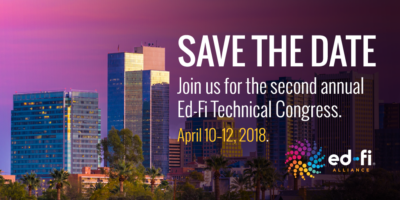The proverbial carrot.
We crawl before we walk, we walk before we run, we run before we are coordinated enough to play a sport. There is a natural order to things. A progression. Nowhere is this fact more important than in the education technology sector. So where do the latest and most exciting technology innovations fit into this progression?
Over my holiday break and on the heels of CES where all the buzz was around the use and application of artificial intelligence, AI; I thought a lot about these wonderful new shiny objects (yep, sign me up for LG’s new rollable TV!) and tried to reconcile that world with where many of our public schools are in terms of their technology use. I ran across this insightful write up in EdScoop, a Q&A with Microsoft’s Vice President of Worldwide Public Sector Education, Anthony Salcito. (Note: this is not an endorsement of MSFT or their approach, rather simply to illustrate a larger point about the current state of ed-tech :))
In the article, Salcito clearly understands the progression of data, he calls it the “four phases of data”. And while he recognizes that most public institutions are just hitting on the second phase where they can consolidate and display data, he gets excited about where we go once the fourth phase is reached. Once schools have predictive analytics and dashboards and deep learning tools already applied to their data sets, that’s when, according to Salcito, we can truly unlock the potential of AI and data itself is in the background being leveraged to bring personalized learning to the 51 million public school students in America and beyond! Awesome. Yes. I’m on board.
I love this idea and I love that big companies like Microsoft, Amazon, Google, Apple and many others are thinking about this as a reality. If there is a progression to crawl, walk, run; the promise of AI is the proverbial carrot. It’s what gets us motivated to continue the journey, which is, let’s face it, a lot of hard work.
Let’s Get Real.
The reality of what’s happening today is that our public schools are not ready to even think about AI as a serious tool to support teachers and students. What we see is a pretty varied picture. Some schools are further along their technology progression, having iterated on it over many years. Some schools, and I would argue probably most schools, are just wrapping their arms around data and the thought of real-time data to inform and support teachers is still a dream. So how do we think about the promise of AI, machine learning, big data and deep learning in context of this?
While these cutting-edge advances could mean fantastic and exciting impacts for our society, for many in public schools it would be like competing at the Olympics while what we really need to focus on is learning how to run. It’s out of order.
The way I think about it and I encourage others in the ed-tech space to consider Maslow’s hierarchy of needs, but applied to data science. Just as I was contemplating this concept I ran across this post by data scientist, Monica Rogati, who explored the dilemma brilliantly. She contends that AI is indeed fantastic, but first you need to take care of the basic needs; data collection, infrastructure, storage, clean data and so on. Before we can reach self-actualization we first need food, water and shelter.
Another data scientist, who has been seeing the same issues across organizations, summed it up like this, “Trying to apply the latest predictive models without a reliable data infrastructure is like driving a fancy car on broken roads – you’re unlikely to get very far.”
This is the work of the Ed-Fi Community. This dedicated band of technologists and educators are working overtime to fix the broken roads, to address the foundation of the data pyramid of needs; to collect data, to move and store data, and to start to transform the data. You all, our community is hard at work getting the base of the pyramid on solid footing so that we can progress towards the bright, shiny promise of AI.
For now, as we embark upon a new year, I’m happy with the dream of AI as motivation for something better; and I’m equally as happy to keep plugging away with all of you to do the hard work that is going to get us there.


